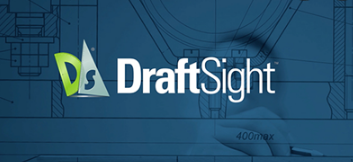What is nanocad and what are its features?
This article seeks to answer the question; Is Nanocad open source? . . . Nanocad is a software that enables users to create and edit 3D objects using a CAD (Computer Aided Design) program. Nanocad has many features that make it an ideal tool for designers, engineers and scientists. Some of the features of nanocad include: the ability to create complex shapes; the ability to import 3D models from other software programs; the ability to export 3D models in various file formats; and the ability to share designs with others.
Is Nanocad open source?
Nanocad is an open source CAD program that allows users to create and edit 3D models using a variety of file formats. It is available for Windows, and Linux platforms. The software is free to download and use. Nanocad is free to use, and the program packs in a lot of features. Some of these features include: Nanocad can be used to create 3D models of physical objects and designs. The model can be created in any desired scale.
Freeform and parametric modeling are available. Various file types can be imported into the program, including DXF, 3DS, OBJ, STL (STL is an open standard file format used by many CAD programs), IGES, STEP, VRML, X3D and CIFF. The software supports many other file formats, including Autodesk’s proprietary file format used in AutoCAD PDF and SVG.
Related Article // How much does NanoCAD cost?
When was nanocad released?
Nanocad was released in July 2008. The initial CAD program allowed users to create 3D models with a tangible computing interface. Today, the software is marketed as an easy way for people to create models of objects and circuits without the need for special tools or training. The software offers a variety of features that allow users to model complex structures with ease.
Who developed Nanocad?
NanoCAD was developed by the company Nanosoft Ltd, in collaboration with other nanotechnology company Nanosys. The software is currently used by a number of universities, research institutes and companies.
Does nanocad work on Mac?
Nanocad is a Windows-only application. However, Nanosoft are working to release an update for Mac users in the near future. The software lets you create a single part or an entire structure. With the single part option, there are limitations as to how many parts you can create and how complex they can be.
Who uses Nanocad?
Nanocad is an application used by individuals, businesses and professionals to create 3D models, drawings, and illustrations. It is available on a number of platforms, including Windows, and Linux. Nanocad is free to download and use by individuals, businesses and professionals who have design projects to complete.
Also Read: Lumion vs vray
What industries use nanocad and what are some applications?
The use of 3D printing technology is rapidly growing in many industries, and there are a variety of applications for it. Some common uses include creating models for product design and manufacturing, creating prototypes for products, making customized parts, and producing medical devices. There are also a variety of potential applications for 3D printing technology that have yet to be explored. For example, scientists are looking into ways to use it to create human tissues and organs.
The pros and cons of using nanocad
Nanocad is a new software program that allows users to create 3D models using sizes down to 100 nanometers. Nanocad has many potential benefits, such as the ability to create models more quickly and accurately than traditional CAD programs, the ability to share models with others more easily, and the potential for smaller and more efficient devices. On the other hand, there are also some potential drawbacks of using nanocad, such as the possibility that models created with it may not be durable or error-free.
Also Read // Is NanoCAD safe to use?
Conclusion:
How is the future for nanocad?
Nanocad has the potential to revolutionize the way products are designed. Nanocad is able to create extremely detailed 3D models of objects, making it a powerful tool for product development and manufacturing. While nanocad’s current capabilities are impressive, there are several areas in which its development could be accelerated. First and foremost, improvements in computer hardware are necessary for nanocad to reach its full potential. Second, further refinement of the software’s interface is needed in order to make it more user-friendly and intuitive. Finally, wider adoption by industry professionals and educators is essential for nanocad to achieve widespread use.
Also Read // Is NanoCAD free for commercial use?
Also Read: Lumion 10 system requirements






